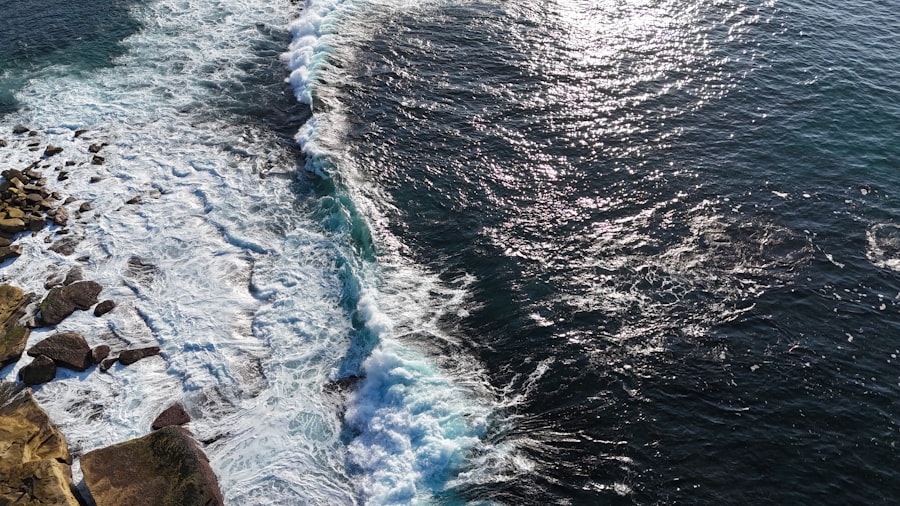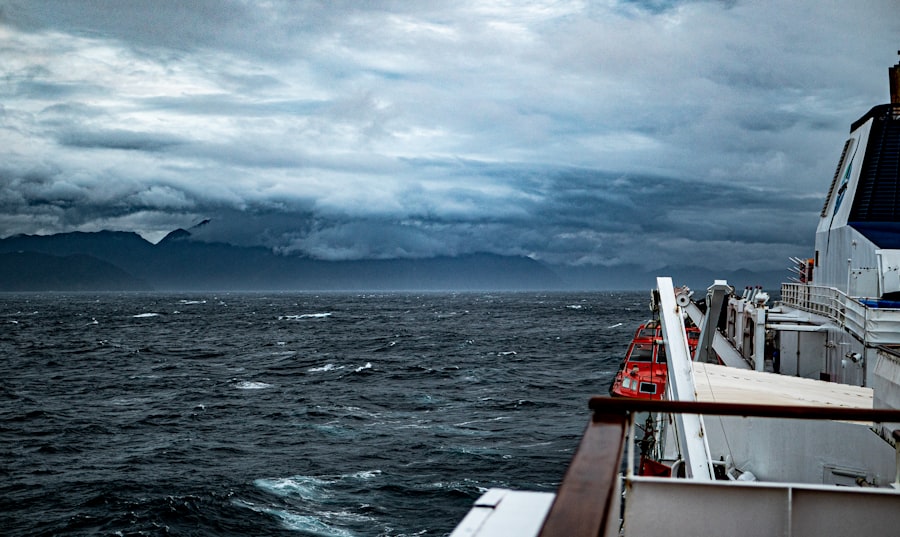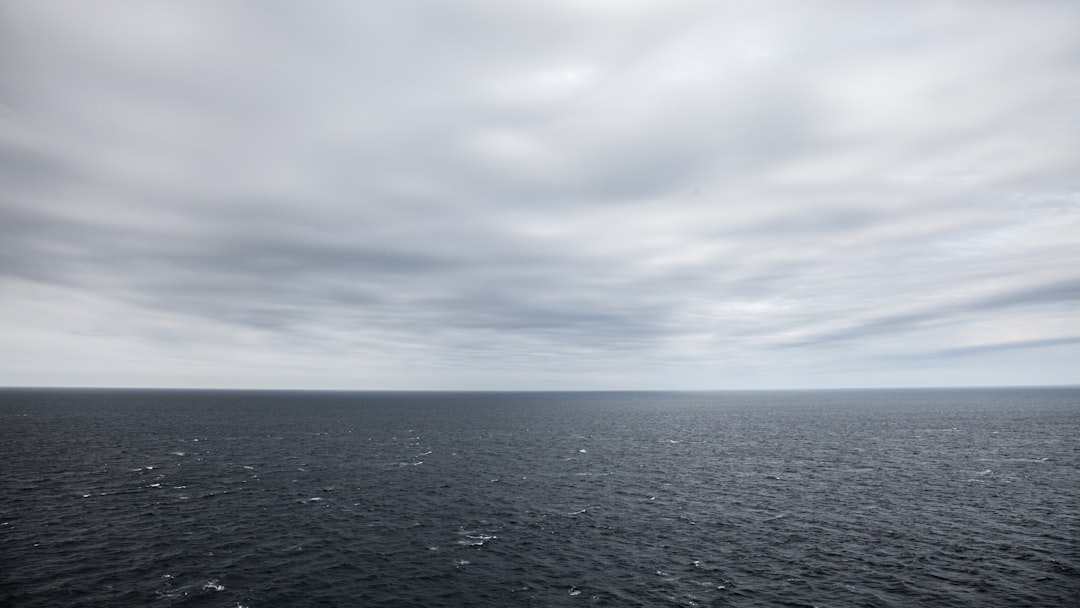The Drake Passage, a body of water situated between the southern tip of South America and Antarctica, is renowned for its tumultuous seas and unpredictable weather. Named after the English explorer Sir Francis Drake, who navigated these waters in the late 16th century, the passage serves as a critical maritime route for vessels traveling to and from the Antarctic region. Stretching approximately 600 kilometers (about 370 miles) wide, it connects the Atlantic and Pacific Oceans, making it a vital corridor for both commercial shipping and scientific expeditions.
The passage is not only significant for its geographical location but also for its unique ecological environment, which plays a crucial role in global oceanic currents. Navigating the Drake Passage is often considered a rite of passage for adventurers and explorers alike. The allure of the icy landscapes of Antarctica, coupled with the thrill of traversing one of the most challenging maritime routes in the world, draws many to embark on this journey.
However, the Drake Passage is not merely a scenic route; it is a formidable challenge that demands respect and preparation. Understanding its complexities is essential for anyone considering a voyage through these storied waters.
Key Takeaways
- The Drake Passage is a treacherous body of water located between the southern tip of South America and the northern tip of Antarctica.
- The dangers of the Drake Passage include extreme weather conditions, rough seas, and strong winds, making it one of the most challenging maritime routes in the world.
- The best time to navigate the Drake Passage is during the austral summer (November to March) when the weather is relatively milder, and the sea conditions are more favorable.
- Choosing the right vessel for the journey is crucial, with options ranging from small expedition ships to larger cruise liners, each offering different levels of comfort and stability.
- Safety precautions and emergency procedures are essential for navigating the Drake Passage, including mandatory safety drills, experienced crew members, and well-equipped vessels to handle any potential emergencies.
Understanding the dangers of the Drake Passage
The Drake Passage is infamous for its rough seas and unpredictable weather patterns, which can pose significant dangers to vessels traversing its waters. The confluence of the Atlantic and Pacific Oceans creates a unique environment where strong currents and winds can lead to sudden storms and high waves. Mariners often describe the experience of navigating the Drake as akin to riding a roller coaster, with swells that can reach heights of over 30 feet.
In addition to the physical challenges posed by the sea, the Drake Passage also presents navigational hazards. Icebergs and floating ice can be encountered unexpectedly, particularly during certain times of the year when melting occurs.
These obstacles can pose serious threats to vessels, necessitating careful navigation and constant monitoring of conditions. The combination of treacherous weather and potential ice hazards underscores the importance of thorough planning and awareness when embarking on a journey through this formidable passage.
Best time to navigate the Drake Passage

Timing is crucial when planning a voyage through the Drake Passage. The best window for navigation typically falls between late October and early March, coinciding with the Antarctic summer. During this period, weather conditions are generally more favorable, with calmer seas and milder temperatures.
This timeframe also aligns with the peak season for wildlife activity in the region, offering travelers a chance to witness an array of marine life. However, even during this optimal period, conditions can still be unpredictable. Sudden storms can arise without warning, and travelers should remain prepared for changes in weather.
It is advisable for those planning to navigate the passage to stay informed about current forecasts and to be flexible with their itineraries. By choosing to embark on their journey during this prime season, adventurers can enhance their chances of experiencing a smoother crossing while enjoying the breathtaking scenery that surrounds them.
Choosing the right vessel for the journey
| Vessel Type | Advantages | Disadvantages |
|---|---|---|
| Sailboat | Environmentally friendly, quiet, and cost-effective | Dependent on wind, slower speed, and limited space |
| Motorboat | Fast speed, greater range, and more power | Higher fuel consumption and environmental impact |
| Kayak/Canoe | Maneuverable, quiet, and good for exploration | Limited storage, physical effort, and exposure to elements |
Selecting an appropriate vessel is paramount when considering a journey through the Drake Passage. The choice of ship can significantly impact both safety and comfort during the crossing. Many travelers opt for expedition vessels specifically designed for polar waters, which are equipped with reinforced hulls to withstand ice conditions and are built to handle rough seas.
These ships often feature stabilizers that help reduce motion, providing a more comfortable experience for passengers. In addition to safety features, potential travelers should also consider the amenities offered by different vessels. Some ships provide luxurious accommodations and onboard activities, while others focus on a more rugged experience that emphasizes exploration and adventure.
Ultimately, the choice of vessel should align with individual preferences and priorities, ensuring that travelers feel secure and comfortable as they navigate one of the world’s most challenging maritime routes.
Safety precautions and emergency procedures
Safety should always be a top priority when navigating the Drake Passage. Mariners are encouraged to familiarize themselves with safety protocols before embarking on their journey. This includes understanding emergency procedures, such as evacuation plans and communication protocols in case of distress.
Most reputable expedition companies provide thorough safety briefings before departure, ensuring that all passengers are aware of what to do in case of an emergency. In addition to understanding emergency procedures, travelers should also equip themselves with essential safety gear. Life jackets, flares, and first aid kits are standard items that should be readily available on board.
It is also wise for passengers to keep personal safety items on hand, such as medications or seasickness remedies, to ensure they are prepared for any eventuality during their crossing.
Navigational challenges in the Drake Passage

Navigating through the Drake Passage presents unique challenges that require skillful seamanship and keen awareness of environmental conditions. The passage is characterized by strong currents that can change rapidly, making it essential for navigators to stay alert and responsive to shifting conditions. Additionally, fog can roll in unexpectedly, reducing visibility and complicating navigation efforts.
Mariners must also contend with varying depths and underwater topography in the passage. Knowledge of local charts and an understanding of potential hazards are crucial for safe navigation. Many vessels employ advanced technology such as radar and GPS systems to assist in navigation, but experienced crew members remain indispensable in interpreting data and making real-time decisions based on changing conditions.
Wildlife encounters in the Drake Passage
One of the most enchanting aspects of navigating the Drake Passage is the opportunity to encounter diverse wildlife that inhabits these waters. The region is home to an array of marine species, including seals, whales, and various seabirds. Travelers may be fortunate enough to spot humpback whales breaching or orcas hunting in their natural habitat.
The sight of these majestic creatures against the backdrop of icy landscapes creates unforgettable memories for those fortunate enough to witness them. Birdwatchers will also find delight in the avian population that frequents the passage. Species such as albatrosses and petrels glide gracefully above the waves, often following ships for miles in search of food scraps.
These encounters not only enhance the journey but also provide valuable insights into the rich biodiversity that thrives in this remote part of the world.
Tips for a smooth and enjoyable journey
To ensure a smooth and enjoyable journey through the Drake Passage, travelers should take several practical steps before setting sail. First and foremost, it is advisable to pack appropriately for varying weather conditions. Layered clothing is essential, as temperatures can fluctuate dramatically throughout the day.
Waterproof gear is also recommended to stay dry during potential splashes from waves. Additionally, travelers should prepare themselves mentally for the crossing by understanding that rough seas may be encountered at any time. Being mentally prepared can help alleviate anxiety and enhance enjoyment during moments of turbulence.
Engaging with fellow passengers and crew members can also foster camaraderie and create a more enjoyable atmosphere on board.
Historical significance of the Drake Passage
The historical significance of the Drake Passage cannot be overstated. It has long been a critical route for explorers seeking to uncover new territories and trade routes since its discovery by European navigators in the 16th century. Sir Francis Drake’s expedition marked one of the first recorded crossings, paving the way for future explorers who would follow in his wake.
Throughout history, many notable figures have traversed these waters in pursuit of adventure or scientific discovery. The passage has served as a gateway for expeditions aimed at understanding Antarctica’s unique ecosystems and climate patterns. Today, it continues to hold importance not only as a maritime route but also as a site for ongoing research into climate change and its effects on polar regions.
Alternative routes and transportation options
While navigating through the Drake Passage remains a popular choice for reaching Antarctica, alternative routes do exist for those seeking different experiences or wishing to avoid potential challenges associated with this passage. One such option is flying directly into research stations or tourist hubs located on the Antarctic Peninsula or nearby islands. This method allows travelers to bypass rough seas altogether while still experiencing the beauty of Antarctica.
Additionally, some cruise lines offer itineraries that include stops at various points along South America’s coast before heading southward toward Antarctica. These routes may provide opportunities for land excursions or cultural experiences in countries such as Chile or Argentina before embarking on an Antarctic adventure.
The allure and adventure of navigating the Drake Passage
The allure of navigating the Drake Passage lies not only in its breathtaking landscapes but also in its rich history and vibrant marine life. For adventurers seeking an unforgettable experience, traversing these challenging waters offers a unique blend of excitement and discovery. While it demands respect due to its unpredictable nature, proper preparation can lead to an enriching journey filled with awe-inspiring moments.
Ultimately, those who choose to navigate this storied passage become part of a long tradition of explorers who have braved its waters in pursuit of knowledge and adventure. The Drake Passage stands as a testament to nature’s power and beauty—a place where challenges abound but rewards await those willing to embrace them.
The Drake Passage is often cited as one of the most treacherous sea routes in the world, notorious for its unpredictable weather and turbulent waters. This perilous stretch of ocean, located between the southern tip of South America and Antarctica, challenges even the most experienced sailors.
This article delves into the geographical and historical significance of the passage, providing a comprehensive overview of why it is considered so dangerous. You can read more about it by visiting this page.
WATCH NOW! Drake Passage: Earth’s Deadliest Waters Revealed
FAQs
What is the Drake Passage?
The Drake Passage is the body of water between the southern tip of South America and the northern tip of the Antarctic Peninsula. It connects the southwestern part of the Atlantic Ocean with the southeastern part of the Pacific Ocean.
Why is the Drake Passage considered dangerous?
The Drake Passage is known for its rough seas and strong winds, which are caused by the convergence of the cold Antarctic Circumpolar Current and the warmer waters of the Atlantic and Pacific Oceans. These conditions can create extremely challenging sailing and navigation conditions.
Are there specific hazards in the Drake Passage?
The Drake Passage is prone to intense storms and high waves due to the strong winds and currents. Icebergs and ice floes from Antarctica can also pose a hazard to ships navigating the passage.
Is the Drake Passage the most dangerous sea in the world?
While the Drake Passage is known for its challenging conditions, it is not officially recognized as the most dangerous sea in the world. Other bodies of water, such as the North Atlantic Ocean and the Southern Ocean, also have reputations for being particularly hazardous to navigate.
